Recent Posts
The Step-by-Step Process of Fire Damage Cleanup: Expert Insights from SERVPRO®
12/18/2024 (Permalink)
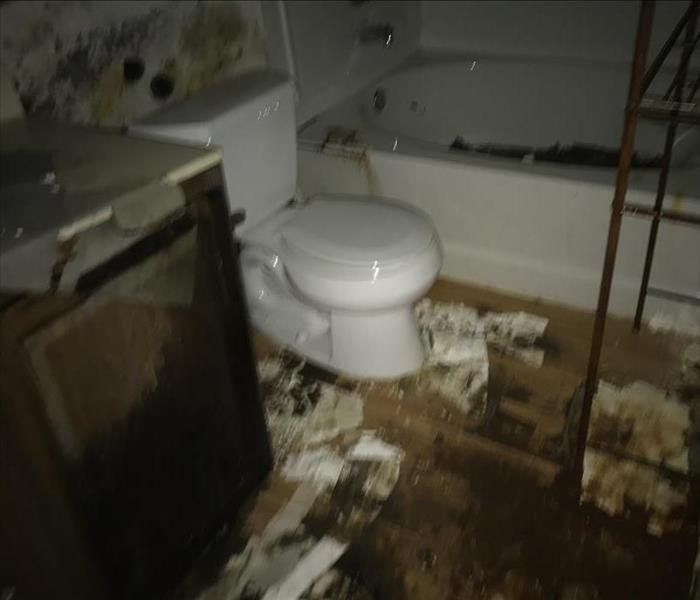 wW’ll break down the fire damage cleanup process, step by step, using expert insights from SERVPRO®.
wW’ll break down the fire damage cleanup process, step by step, using expert insights from SERVPRO®.
When a fire occurs, the immediate danger might end once the flames are extinguished, but the restoration process is just beginning. Fire damage cleanup requires specialized knowledge and expertise to ensure that your property is restored efficiently and safely. With fire damage affecting everything from the structure of a building to personal belongings, it’s essential to follow a thorough, step-by-step process to ensure nothing is missed.
According to the National Fire Protection Association (NFPA), there were 356,500 home structure fires in 2020, leading to $7.3 billion in direct property damage. This highlights the importance of acting quickly and correctly when it comes to fire damage restoration. In this blog, we’ll break down the fire damage cleanup process, step by step, using expert insights from SERVPRO®.
Step 1: Emergency Contact and Assessment
The first step in the fire damage cleanup process is to contact a professional restoration company like SERVPRO. Time is critical after a fire, and the sooner a team is on-site, the better the chances of minimizing damage. Upon arrival, SERVPRO professionals will assess the extent of the fire, smoke, and soot damage. This comprehensive inspection helps determine the appropriate restoration strategy.
What Happens During the Assessment:
- A detailed evaluation of the fire-affected areas.
- Inspection of structural damage, including walls, ceilings, and floors.
- Assessment of secondary damages caused by firefighting efforts, such as water damage from hoses or sprinklers.
Step 2: Securing the Property
After the initial assessment, it’s crucial to secure the property to prevent further damage or unauthorized access. SERVPRO experts will board up windows, walls, and doors that may have been compromised during the fire. Additionally, if the roof is damaged, tarping services will be used to prevent water from entering and causing further issues.
Key Steps in Securing the Property:
- Board up broken windows and doors.
- Tarp any exposed areas of the roof.
- Set up temporary fencing if needed to protect the site.
Step 3: Water Removal and Drying
In many cases, water damage follows fire damage due to the efforts to extinguish the flames. SERVPRO uses advanced equipment to remove any standing water and begin the drying process. Excess moisture can lead to additional structural damage, mold growth, and other long-term problems, so this step is vital.
Water Removal Techniques:
- Use of industrial pumps and vacuums to remove large volumes of water.
- Setting up air movers and dehumidifiers to thoroughly dry out affected areas.
- Inspecting areas prone to hidden moisture, such as under flooring or behind walls.
Step 4: Soot and Smoke Removal
Once the water has been removed, the next critical step is to clean soot and smoke residues from surfaces. Soot can be incredibly corrosive, and if not properly cleaned, it can cause permanent staining and deterioration of materials. SERVPRO uses specialized equipment and techniques to clean surfaces and neutralize smoke odors.
Methods for Soot and Smoke Removal:
- Use of dry sponges and vacuums for dry soot.
- Wet cleaning methods for areas with heavy soot residue.
- Air scrubbers and thermal fogging to remove lingering smoke odors.
Step 5: Cleaning and Sanitizing
After the soot and smoke residues have been addressed, SERVPRO focuses on cleaning and sanitizing the property and any salvageable items. This process ensures that all affected areas are thoroughly cleaned and safe for reoccupation. SERVPRO also provides deodorization services to eliminate any smoke odors.
Cleaning and Sanitizing Include:
- Cleaning walls, floors, and ceilings.
- Cleaning and sanitizing salvageable furniture, electronics, and personal items.
- Deodorizing the space using ozone generators or hydroxyl technology.
Step 6: Restoration and Repair
The final stage of fire damage cleanup is the restoration process. Depending on the extent of the fire damage, this step could involve minor repairs such as replacing drywall or more significant construction tasks, such as rebuilding entire sections of the home. SERVPRO works to restore your property to its pre-fire condition, ensuring a seamless transition from cleanup to repair.
Examples of Restoration Tasks:
- Replacing damaged drywall, flooring, and paint.
- Reconstructing severely damaged sections of the home or building.
- Installing new carpeting, tile, or other flooring materials.
The SERVPRO Difference
At SERVPRO, our goal is to make the fire damage restoration process as stress-free and efficient as possible. We understand the emotional toll a fire can take, and our experienced professionals are trained to handle every step with care, precision, and expertise. From assessment to complete restoration, we work diligently to restore your property and belongings to their original state.
Final Thoughts: The Importance of Professional Fire Damage Cleanup
Fire damage cleanup is a complex process that requires expertise, specialized equipment, and a thorough approach. Attempting to handle the aftermath of a fire on your own can lead to missed damage, lingering odors, and long-term structural issues. By following this step-by-step process and working with a trusted partner like SERVPRO, you can ensure that your property is restored quickly and effectively.
If your home or business has suffered fire damage, don't hesitate to contact SERVPRO. Our team of experts is ready to help you through the fire damage cleanup process, ensuring that your property is safe, secure, and fully restored.
Does Renters Insurance Cover Mold Damage? Expert Insights from SERVPRO®
11/13/2024 (Permalink)
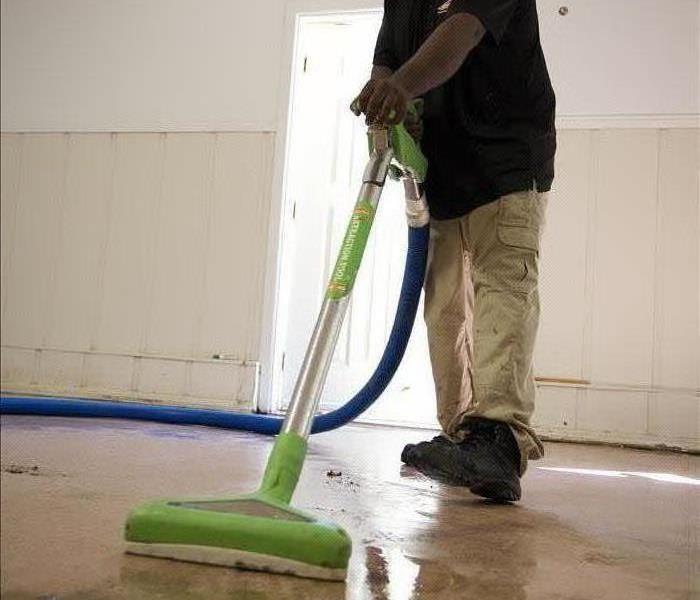 If you're renting and discover mold in your home, you might be wondering: Does renters insurance cover mold damage?
If you're renting and discover mold in your home, you might be wondering: Does renters insurance cover mold damage?
Mold damage can quickly become a serious concern for renters in Tucson, AZ, as it can cause structural damage to property and affect personal belongings. If you're renting and discover mold in your home, you might be wondering: Does renters insurance cover mold damage? The answer can vary depending on the circumstances and the specific insurance policy.
In this blog, we’ll explore expert insights on renters insurance and mold coverage, providing you with everything you need to know to protect your home and belongings.
Mold in Homes: A Common Issue
Mold can thrive in damp, humid environments, and it’s more common than many renters realize. According to a study conducted by the Insurance Information Institute (III), mold claims make up approximately 22% of property insurance claims annually. Mold can grow rapidly in the presence of moisture, making it essential to address water damage issues as soon as they arise.
Does Renters Insurance Cover Mold?
The short answer is that it depends on the cause of the mold growth. Renters insurance may or may not cover mold damage, depending on how the mold originated. Renters insurance generally protects your personal belongings from certain covered perils, such as fire, theft, or water damage. However, mold is a unique case where coverage is often determined by the underlying cause of the mold.
When Renters Insurance Might Cover Mold Damage
Renters insurance typically covers mold damage in situations where the mold resulted from a sudden and accidental covered peril. Here are a few scenarios where renters insurance may help with mold damage:
- Water damage from a burst pipe: If mold grows as a result of a pipe suddenly bursting and flooding your apartment, renters insurance may cover the costs of cleaning up and replacing damaged belongings.
- Water damage from an appliance malfunction: If a dishwasher or washing machine leaks unexpectedly and leads to mold growth, this could be considered an accident, and renters insurance may cover the mold damage.
- Storm-related water damage: If mold develops after a severe storm causes water damage, renters insurance may offer protection, depending on your policy’s terms.
In these cases, the mold damage would be considered a secondary issue resulting from a covered peril, and your policy may help with cleanup costs and replacing personal items.
When Renters Insurance May Not Cover Mold Damage
Renters insurance is less likely to cover mold damage that occurs due to neglect or maintenance issues. If mold develops because of long-term moisture problems that were not promptly addressed, insurance companies may deny coverage. Here are some examples of when mold damage is typically not covered:
- Poor ventilation leading to mold growth: If mold forms in a bathroom or kitchen due to humidity and lack of ventilation, this would likely be considered a maintenance issue rather than an accident.
- Gradual water leaks: Mold that develops from slow leaks, such as a leaky faucet or roof, may not be covered if the damage is deemed to be caused by negligence.
- Pre-existing mold issues: If mold existed in the rental property before you moved in, it’s unlikely to be covered by your renter's insurance.
How to Check if Mold Damage is Covered by Your Renters Insurance
If you're unsure whether your renter's insurance covers mold damage, here are a few steps you can take:
- Review your policy: Carefully read through your renter's insurance policy to understand the covered perils and any exclusions related to mold.
- Contact your insurance provider: Reach out to your insurance company and ask for clarification on mold coverage. They can explain if mold damage is included and under what circumstances.
- Ask about additional coverage: Some insurance providers offer riders or endorsements that can be added to your renter's policy to provide additional mold coverage. It may be worth exploring if you live in a high-moisture area or want extra protection.
Tips for Preventing Mold in a Rental Property
Preventing mold in your rental home is key to avoiding potential insurance complications. Here are a few expert tips to reduce the risk of mold growth:
- Address water damage immediately: If you notice any water leaks or flooding in your rental, notify your landlord and take steps to dry the area promptly to prevent mold growth.
- Use a dehumidifier: Maintaining a humidity level below 60% can help prevent mold. A dehumidifier can be especially useful in humid climates or during rainy seasons.
- Improve ventilation: Ensure that your bathroom, kitchen, and laundry areas are well-ventilated. Open windows, use exhaust fans or consider using a fan to reduce moisture in these areas.
- Report issues to your landlord: Inform your landlord immediately if you spot any leaks, water damage, or signs of mold so they can address the issue before it worsens.
Why SERVPRO® for Mold Remediation?
Mold can spread rapidly and cause significant damage if left untreated. If you discover mold in your rental home and need professional assistance, SERVPRO is Here to Help®. Our expert mold remediation services can safely and effectively remove mold from your property, restoring your space to a clean, mold-free condition. With years of experience, SERVPRO has the tools and expertise to tackle mold problems, large or small.
Conclusion
While renters insurance may cover mold damage in certain situations, such as when mold is the result of a covered peril, it’s important to review your policy carefully to understand what is and isn’t covered. Mold damage caused by neglect or pre-existing issues may not be included in your policy, so it’s essential to take proactive steps to prevent mold from developing in your rental home.
If you’re dealing with mold in your rental and need expert assistance, don’t hesitate to contact SERVPRO for professional mold remediation services.
How to Protect Your Pets During a Flood
10/15/2024 (Permalink)
Floods can be incredibly stressful and dangerous, not just for you but for your pets too. In Tucson, AZ, where flash floods can happen with little warning, it’s essential to have a plan in place to keep your pets safe. This blog offers practical tips to protect your furry family members during a flood.
Understanding the Risk of Floods in Tucson, AZ
Did you know that, according to the National Weather Service, flash floods are the #1 weather-related killer in the United States? Tucson can experience sudden and severe weather changes, such as flash floods, at any time throughout the year. As a pet owner, being prepared is crucial!
Preparing an Emergency Kit for Your Pets
Just like you prepare an emergency kit for your family, your pets need one too. A well-prepared kit should include enough food, water, and supplies to last at least three days. Here’s what to pack:
- Pet Food and Water
- Medications and Medical Records
- Leash, Collar, and ID Tags
- Comfort Items
Having this kit ready and easily accessible will make it easier to evacuate quickly if necessary.
Planning for Evacuation with Pets
If you need to evacuate your home, take your pets with you. Leaving them behind isn’t an option, as floods can quickly become life-threatening. Here are some tips for evacuating with pets:
- Know Your Pet-Friendly Shelters: Research pet-friendly shelters in Tucson, AZ, before a disaster strikes. Many emergency shelters don’t accept pets, so plan ahead to find accommodations that do.
- Transport Crates or Carriers: Make sure you have transport crates or carriers for each pet. These will make it easier to evacuate safely and keep your pets secure during the journey.
- Keep Your Pet Calm: Animals can sense stress and may become frightened during an evacuation. Keep them calm with their favorite toys, treats, and a soothing voice.
Keeping Pets Safe During the Flood
During a flood, it’s important to keep your pets indoors and away from floodwaters. Floodwaters can contain dangerous contaminants, sharp objects, and even wildlife. Here’s what you can do:
- Close all windows and doors, and block any potential escape routes to prevent your pets from getting into the floodwaters.
- Set up a safe space in your home where your pets can stay during the flood. This could be a room on a higher floor with their food, water, and comfort items.
- Keep a close eye on your pets during the flood. Some animals become anxious or try to escape, so it’s important to stay vigilant.
Be Prepared!
Floods can be unpredictable and dangerous, but with the right preparation, you can keep your pets safe. By planning ahead, creating an emergency kit, and knowing how to evacuate safely, you can ensure that your furry family members are safe during a flood. If your home has been affected by flooding, SERVPRO of Downtown Tucson is here to help with cleanup and restoration services.
The Critical Importance of Prompt Storm Damage Cleanup
9/11/2024 (Permalink)
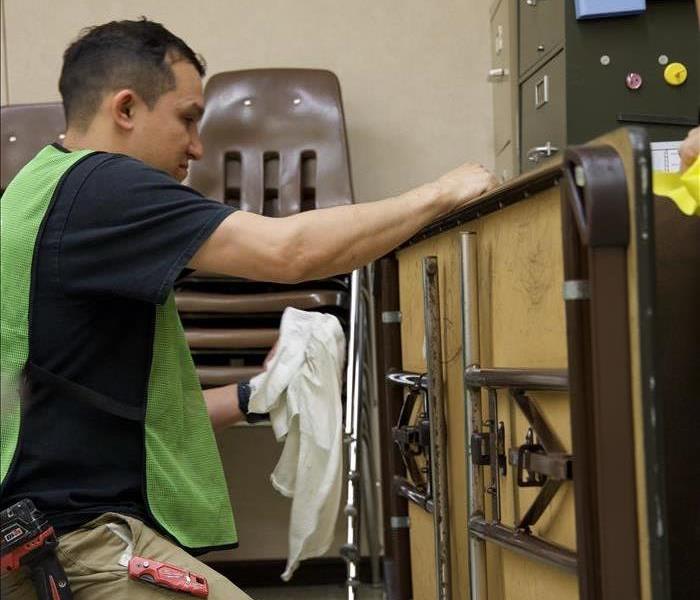 We explore why prompt storm damage cleanup is essential and how it can save you time, money, and stress in the long run.
We explore why prompt storm damage cleanup is essential and how it can save you time, money, and stress in the long run.
When storms strike in Tucson, Arizona, they can leave behind a trail of destruction that affects homes, businesses, and entire communities. The immediate aftermath of a storm can be overwhelming, but taking swift action to clean up storm damage is crucial. In this blog, we will explore why prompt storm damage cleanup is essential and how it can save you time, money, and stress in the long run.
Preventing Further Damage
One of the most significant reasons for prompt storm damage cleanup is to prevent further damage to your property. Storms can cause structural damage, broken windows, and roof leaks, which can quickly lead to more severe issues like water damage, mold growth, and even foundation problems. Addressing these issues immediately can prevent them from escalating into more extensive and costly repairs.
Health and Safety Concerns
Storm damage can create hazardous conditions that pose risks to health and safety. Standing water, exposed electrical wires, and debris can be dangerous if not handled properly. Mold and mildew can develop within 24-48 hours after water intrusion, leading to respiratory issues and other health problems. Quick cleanup and remediation are essential to ensuring the safety of everyone in the affected area.
Financial Savings
The financial implications of delaying storm damage cleanup can be significant. According to the National Institute of Building Sciences, every dollar spent on disaster mitigation saves six dollars in future costs. By acting quickly, you can reduce the overall expense of repairs and prevent additional damage that can inflate costs.
Insurance Claims
Prompt storm damage cleanup is also beneficial when it comes to filing insurance claims. Insurance companies are more likely to approve claims if the damage is documented and addressed quickly. Delaying the cleanup process can complicate claims and potentially lead to reduced compensation. Timely action ensures a smoother and more efficient claims process.
Restoring Normalcy
Storms can be incredibly disruptive, and the longer damage remains unaddressed, the longer it takes to return to normalcy. Swift cleanup helps restore your home or business to its pre-storm condition, minimizing the interruption to your daily life or operations. It also helps maintain the value of your property, ensuring that it remains in good condition.
Choosing the Right Restoration Company
When it comes to storm damage cleanup, choosing a reliable and experienced restoration company like SERVPRO® is crucial. Our team of professionals is equipped to handle all aspects of storm damage, from water extraction and drying to mold remediation and structural repairs. We are available 24/7, ready to respond quickly to your emergency needs.
Conclusion
The importance of prompt storm damage cleanup cannot be overstated. From preventing further damage and ensuring health and safety to saving money and easing insurance claims, taking swift action is essential. Trust SERVPRO to provide the professional and efficient cleanup services you need to recover from storm damage and get back to normal life as quickly as possible.
The Crucial Role of Air Scrubbers in Fire Damage Restoration
8/14/2024 (Permalink)
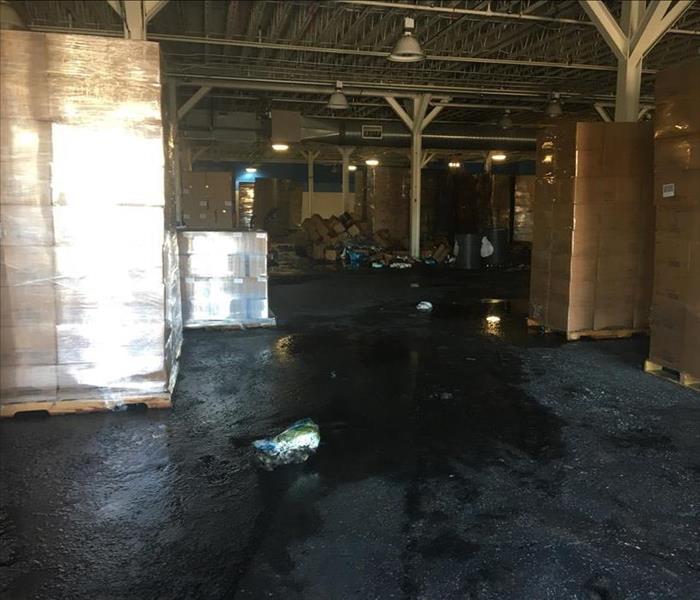 SERVPRO® explains the importance of air scrubbers in fire damage restoration.
SERVPRO® explains the importance of air scrubbers in fire damage restoration.
Fire damage restoration involves several critical steps to ensure a property is safe and habitable again. Among these steps, the use of air scrubbers plays a pivotal role in improving air quality and eliminating harmful particulates. In this blog, SERVPRO® explains the importance of air scrubbers in fire damage restoration and how they contribute to a thorough and effective cleanup process.
Understanding Fire Damage and Air Quality
Smoke and Soot Particulates
Fires produce a significant amount of smoke and soot, which can infiltrate every corner of your home. These particulates are not only damaging to surfaces but can also pose severe health risks if inhaled.
Odors and Volatile Organic Compounds (VOCs)
Fires release unpleasant odors and volatile organic compounds (VOCs) into the air. These compounds can cause respiratory issues and other health problems, making it essential to remove them promptly and effectively.
What Are Air Scrubbers?
Definition and Function
Air scrubbers are advanced filtration devices designed to remove contaminants from the air. They use a series of filters, including HEPA (High-Efficiency Particulate Air) filters, to capture and eliminate particulates, VOCs, and odors.
How They Work
Air scrubbers work by drawing air in through a series of filters. The HEPA filter captures up to 99.97% of particles as small as 0.3 microns, including smoke, soot, and other contaminants. The clean air is then circulated back into the environment, significantly improving indoor air quality.
The Role of Air Scrubbers in Fire Damage Restoration
Removing Harmful Particulates
One of the primary roles of air scrubbers in fire damage restoration is to remove harmful particulates from the air. This includes smoke, soot, and ash, which can cause respiratory problems and exacerbate allergies and asthma.
Eliminating Odors
Air scrubbers are highly effective in removing lingering odors caused by fire and smoke. By filtering out VOCs and other odor-causing particles, they help restore a fresh, clean smell to the property.
Enhancing Safety
Using air scrubbers during the restoration process enhances safety for both restoration professionals and property occupants. By continuously filtering the air, these devices reduce the risk of inhaling harmful particulates and VOCs, ensuring a safer environment.
Benefits of Professional Air Scrubber Use
Expertise and Equipment
SERVPRO professionals are trained in the effective use of air scrubbers and other advanced equipment. Our expertise ensures that the devices are used correctly and efficiently, maximizing their effectiveness in improving air quality.
Comprehensive Restoration
Incorporating air scrubbers into the fire damage restoration process is part of SERVPRO's comprehensive approach to restoration. We address not only visible damage but also invisible threats, ensuring a thorough and complete recovery of your property.
Air scrubbers play a vital role in fire damage restoration by removing harmful particulates, eliminating odors, and enhancing overall safety. Trust SERVPRO to use these advanced devices as part of our comprehensive restoration services, ensuring your home is restored to a safe and healthy condition. With our expertise and commitment to quality, you can breathe easier knowing your property is in good hands.
Protecting Your Belongings: Dealing with Mold Damage
7/10/2024 (Permalink)
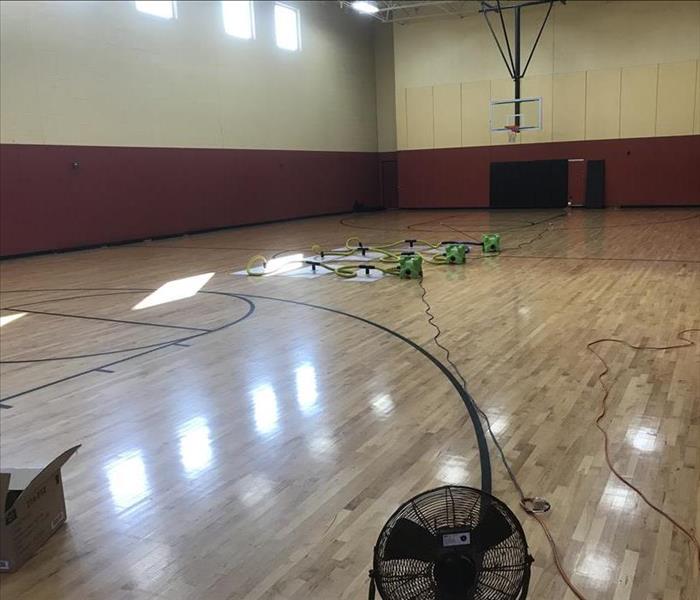 We discuss the impact of mold damage on your belongings and provide tips for salvaging and restoring affected items.
We discuss the impact of mold damage on your belongings and provide tips for salvaging and restoring affected items.
Mold damage can pose a significant threat to your property, including your belongings. Whether it's clothing, furniture, electronics, or sentimental items, mold can quickly spread and cause irreparable damage if left untreated. In this blog post, we'll discuss the impact of mold damage on your belongings and provide tips for salvaging and restoring affected items.
Understanding the Impact of Mold Damage:
Mold can affect a wide range of materials and items within your home, including:
Clothing and Fabrics:
Mold can thrive on clothing, upholstery, curtains, and linens, causing discoloration, musty odors, and deterioration of fabric fibers.
Furniture and Upholstery:
Wood furniture, upholstered sofas, and mattresses are susceptible to mold growth, which can lead to stains, warping, and structural damage.
Electronics and Appliances:
Electronic devices and appliances can become contaminated with mold spores, compromising their functionality and posing safety hazards.
Books and Paper Documents:
Mold can destroy paper-based materials such as books, photographs, and important documents, rendering them unreadable and unsalvageable.
Salvaging Belongings Affected by Mold Damage
Clothing and Fabrics:
For mold-damaged clothing and fabrics, start by removing them from the affected area and allowing them to air out in a well-ventilated space. Wash washable items with hot water and detergent, and consider using mold-inhibiting additives or professional cleaning services for delicate fabrics.
Furniture and Upholstery:
To salvage mold-damaged furniture and upholstery, carefully inspect each item for signs of mold growth and water damage. Wipe down surfaces with a mixture of water and detergent, then disinfect with a solution of vinegar or hydrogen peroxide. Consider hiring professional restoration services for extensive mold damage.
Electronics and Appliances:
Mold-contaminated electronics and appliances should be unplugged and removed from the affected area immediately to prevent further damage and safety hazards. Consult with a qualified technician or appliance repair specialist for evaluation and cleaning recommendations.
Books and Paper Documents:
Mold-damaged books and paper documents may be salvageable with proper cleaning and treatment. Gently brush off any visible mold growth, then wipe surfaces with a damp cloth or sponge. Allow items to air dry thoroughly, and consider consulting with a professional document restoration service for delicate or valuable materials.
Preventing Mold Damage to Belongings
Maintain Proper Indoor Humidity:
To prevent mold damage to your belongings, maintain indoor humidity levels between 30% and 50 percent to inhibit mold growth. Use dehumidifiers in damp areas of your home and ensure adequate ventilation to promote airflow and reduce moisture buildup.
Address Water Damage Promptly:
Promptly address any water leaks, plumbing issues, or water damage within your home to prevent mold growth. Thoroughly dry affected areas within 24-48 hours and consider professional restoration services for extensive water damage.
Mold damage can have a devastating impact on your belongings, but with prompt action and proper care, many items can be salvaged and restored. By understanding the impact of mold damage on various materials and implementing preventive measures, you can protect your belongings and maintain a safe and healthy living environment. If you require assistance with mold remediation or restoration services, contact a reputable restoration company like SERVPRO® for expert guidance and support.
5 Tips for Documenting Water Damage When Filing an Insurance Claim
6/12/2024 (Permalink)
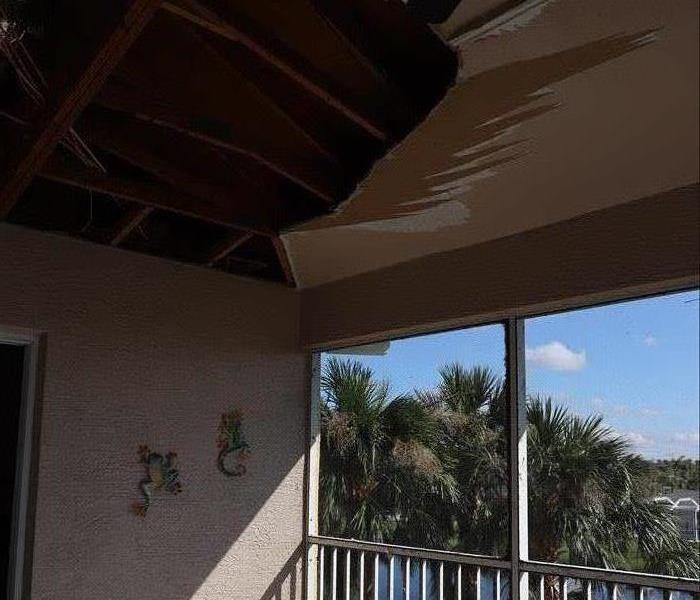 Take photos and videos from multiple angles to capture the full scope of the damage.
Take photos and videos from multiple angles to capture the full scope of the damage.
Water damage can cause significant damage to your property, and taking care of the aftermath can be a daunting task. When it comes time to file an insurance claim, proper documentation is crucial to ensure that you receive the compensation you deserve. Here are some tips to help you effectively document water damage and navigate the insurance claims process:
Take Immediate Action
As soon as you discover water damage, take immediate action to mitigate further damage. This may include stopping the source of water if possible, removing excess water, and drying out the affected areas. Prompt action can help prevent mold growth and minimize structural damage, ultimately reducing repair costs and expediting the restoration process.
Document the Damage
Before you begin any cleanup or repairs, thoroughly document the extent of the damage. Take photos and videos from multiple angles to capture the full scope of the damage. Be sure to include close-up shots of any affected items or areas, as well as wide-angle shots to show the overall damage to the property. Timestamp your documentation to provide a clear record of when the damage occurred.
Make a Detailed Inventory
Create a detailed inventory of all damaged items, including furniture, electronics, and personal belongings. Note the make, model, and approximate value of each item, as well as any identifying features or serial numbers. This will help ensure that you receive proper compensation for your losses. Consider using spreadsheets or inventory apps to organize your documentation and make it easier to track.
Keep Records of Expenses
Keep detailed records of any expenses related to the water damage, including cleanup costs, temporary accommodations, and repairs. Save receipts and invoices for all expenses incurred, as these may be reimbursable by your insurance company. Be sure to include any additional living expenses if you are unable to stay in your home during the restoration process. Organizing your expenses will make it easier to submit a comprehensive claim to your insurer.
Communicate With Your Insurance Company
Contact your insurance company as soon as possible to report the water damage and begin the claims process. Provide them with all the documentation and evidence you have collected, and be sure to communicate openly and honestly throughout the process. Keep track of all correspondence with your insurer, including emails, phone calls, and letters. If you encounter any challenges or delays, don't hesitate to follow up with your insurance adjuster to ensure that your claim is processed in a timely manner.
By following these tips and documenting water damage effectively, you can help ensure a smoother and more successful insurance claims process. Remember to act quickly, be thorough in your documentation, and communicate openly with your insurance company to maximize your chances of receiving fair compensation for your losses.
Conquering Mold Growth in Humid South Central Climates: Prevention and Remediation
5/8/2024 (Permalink)
In the warm and humid climates of the South Central region, mold growth is a persistent challenge for homeowners and property managers alike. The combination of high humidity levels and ample moisture creates the perfect breeding ground for mold spores, leading to unsightly stains, musty odors, and potential structural damage. In this blog, we'll delve into effective strategies for preventing and remedying mold growth in humid South Central climates, empowering property owners to maintain clean and healthy environments.
Understanding the Mold Menace
Mold is a type of fungus that thrives in moist environments, where it can proliferate rapidly and colonize various surfaces. In humid climates, such as those found in the South Central region, mold growth is particularly prevalent, posing challenges for property owners seeking to maintain clean and safe indoor spaces.
Preventative Measures
- Control Indoor Humidity: Invest in a dehumidifier to regulate indoor humidity levels, keeping them between 30-50% to discourage mold growth.
- Improve Ventilation: Ensure adequate ventilation in bathrooms, kitchens, and other moisture-prone areas to allow moisture to escape and prevent condensation buildup.
- Address Water Intrusion Promptly: Repair leaks in plumbing, roofs, and windows immediately to prevent water from infiltrating the property and creating conducive conditions for mold growth.
- Use Mold-Resistant Materials: Opt for mold-resistant building materials, such as mold-resistant drywall and paint, in areas prone to moisture accumulation.
Remediation Techniques
- Identify and Remove Moisture Sources: Conduct regular inspections to identify areas of moisture buildup and address them promptly to prevent mold growth.
- Thorough Cleaning: Remove mold growth from surfaces using a solution of water and detergent, scrubbing gently to ensure complete removal.
- Disinfection: Apply a mold-inhibiting solution or disinfectant to treated areas to prevent mold spores from regrowing.
- Professional Assistance: For severe mold infestations or extensive damage, enlist the help of professional mold remediation experts like SERVPRO to ensure thorough and effective treatment.
Maintaining a Mold-Free Environment
- Regular Inspections: Conduct routine inspections of your property to identify any signs of mold growth or moisture issues and address them promptly.
- Proper Ventilation: Ensure proper ventilation and airflow throughout your property to reduce humidity levels and discourage mold growth.
- Prompt Repairs: Address any water leaks, plumbing issues, or structural damage immediately to prevent moisture buildup and mold growth.
- Educate Occupants: Educate occupants on mold prevention techniques and encourage them to report any signs of mold growth or moisture problems promptly.
Mold growth in humid South Central climates can be a persistent challenge, but with proactive prevention and effective remediation strategies, property owners can maintain clean and healthy indoor environments. By implementing preventative measures, promptly addressing moisture issues, and enlisting professional assistance when needed, property owners can conquer the mold menace and enjoy mold-free living spaces in the South Central region.
What You Need to Know About Salvaging Drywall After Smoke Damage
4/16/2024 (Permalink)
 Don't hesitate to contact the experts at SERVPRO for professional restoration services tailored to your specific needs.
Don't hesitate to contact the experts at SERVPRO for professional restoration services tailored to your specific needs.
Smoke damage can wreak havoc on your property, leaving behind foul odors, discoloration, and ugly stains. If your home or business has experienced smoke damage, you may be wondering if it's possible to salvage the affected drywall or if it needs to be replaced entirely. In this blog post, we'll explore the factors that determine whether drywall can be salvaged after smoke damage and the steps involved in restoring it to its pre-damage condition.
Assessment of Smoke Damage
The first step in determining whether drywall can be salvaged after smoke damage is to assess the extent of the damage. Smoke particles can penetrate deep into porous materials like drywall, leaving behind stubborn odors and stains. A professional restoration company like SERVPRO® can conduct a thorough inspection to evaluate the severity of the smoke damage and recommend the appropriate course of action.
Cleaning and Deodorization
If the smoke damage is minor and limited to the surface of the drywall, it may be possible to clean and deodorize the affected areas. Restoration technicians use specialized cleaning agents and equipment to remove smoke residues and neutralize odors, restoring the appearance and integrity of the drywall. However, if the smoke damage is severe or has penetrated deep into the drywall, more extensive measures may be required.
Sealing and Priming
In some cases, sealing and priming the affected drywall may be necessary to encapsulate any remaining smoke odors and prevent them from permeating the surface. Restoration professionals can apply a primer specifically designed to block odors and stains before repainting the drywall to restore its appearance. This process helps to seal in any lingering odors and ensures a fresh, clean finish.
Replacement of Severely Damaged Drywall
If the smoke damage is extensive or if the drywall has been compromised by fire, water, or mold, replacement may be the best option. Severely damaged drywall may be structurally unsound and pose safety risks if left untreated. Restoration professionals can assess the condition of the drywall and recommend whether replacement is necessary to ensure the safety and integrity of your property.
In conclusion, whether drywall can be salvaged after smoke damage depends on the severity of the damage and the effectiveness of the restoration efforts. While minor smoke damage can often be cleaned and treated to restore the affected drywall, more severe damage may require replacement to ensure the safety and integrity of your property. If your property has experienced smoke damage, don't hesitate to contact the experts at SERVPRO for professional restoration services tailored to your specific needs.
FAQ About Mold: Expert Answers to Your Questions
3/13/2024 (Permalink)
 In this blog, we will explore the most frequently asked questions about mold, providing you with answers to better understand mold damage.
In this blog, we will explore the most frequently asked questions about mold, providing you with answers to better understand mold damage.
When it comes to mold and mold damage, many homeowners have questions about the causes, prevention, and remediation process. In this blog, we will explore the most frequently asked questions about mold, providing you with expert answers to help you better understand how to deal with mold issues in your home.
Q1: What is mold, and why does it grow in homes?
Mold is a type of fungus that thrives in warm, moist environments. It reproduces by releasing tiny spores into the air, which can settle on surfaces and grow into new colonies. When moisture and organic materials, such as paper, wood, or drywall, are present, mold can find the ideal conditions to grow and spread.
Q2: How can I tell if I have mold in my home?
Visible signs of mold, such as discoloration or a fuzzy or slimy texture, are clear indicators of mold growth. Musty odors or an increase in allergy-like symptoms without any apparent cause can also suggest the presence of mold.
Q3: What are the main causes of mold in homes?
The primary causes of mold in homes are moisture and humidity. Leaks, flooding, condensation, or inadequate ventilation can create the damp conditions required for mold growth. Areas with poor airflow, such as basements, bathrooms, and attics, are particularly susceptible.
Q4: Can I remove mold myself, or should I hire professionals?
While small, isolated mold growth could potentially be handled by homeowners, it is generally recommended to seek professional assistance for mold remediation. Expert mold removal specialists, such as SERVPRO®, have the necessary knowledge, experience, and specialized equipment to safely and effectively handle mold problems.
Q5: How long does the mold remediation process take?
The duration of the mold remediation process depends on various factors, including the size of the affected area and the extent of the mold damage. Professionals will conduct a thorough assessment before providing an estimated timeline. Keep in mind that it is crucial not to rush the process to ensure the complete removal and prevention of mold growth.
Q6: Can mold damage be prevented?
While it is impossible to eliminate all mold spores from indoor environments, you can take preventive measures to minimize mold growth. Timely repairs of water leaks or plumbing issues, ensuring adequate ventilation and airflow, and maintaining optimal humidity levels in your home can significantly reduce the risk of mold damage.
Q7: What should I do if I find mold in my home?
If you discover mold growth in your home, the first step is to identify and eliminate the source of moisture. This could involve fixing leaks, improving ventilation, or controlling humidity levels. Next, consult a professional mold remediation service, like SERVPRO®, to assess the extent of the damage and develop a tailored plan for safe and effective mold removal.
Understanding the frequently asked questions about mold is essential for homeowners dealing with mold damage. By learning about the causes, detection, prevention, and remediation process, you can make informed decisions and take the necessary steps to protect your home. When it comes to addressing mold issues, it is best to seek the help of professionals like SERVPRO®, who have the expertise and resources to handle mold remediation effectively.
If you have any additional questions or require expert assistance in mold removal and remediation, contact SERVPRO. Their trained specialists can guide you through the process, providing prompt and reliable services to restore your home from mold damage.

 24/7 Emergency Service
24/7 Emergency Service


